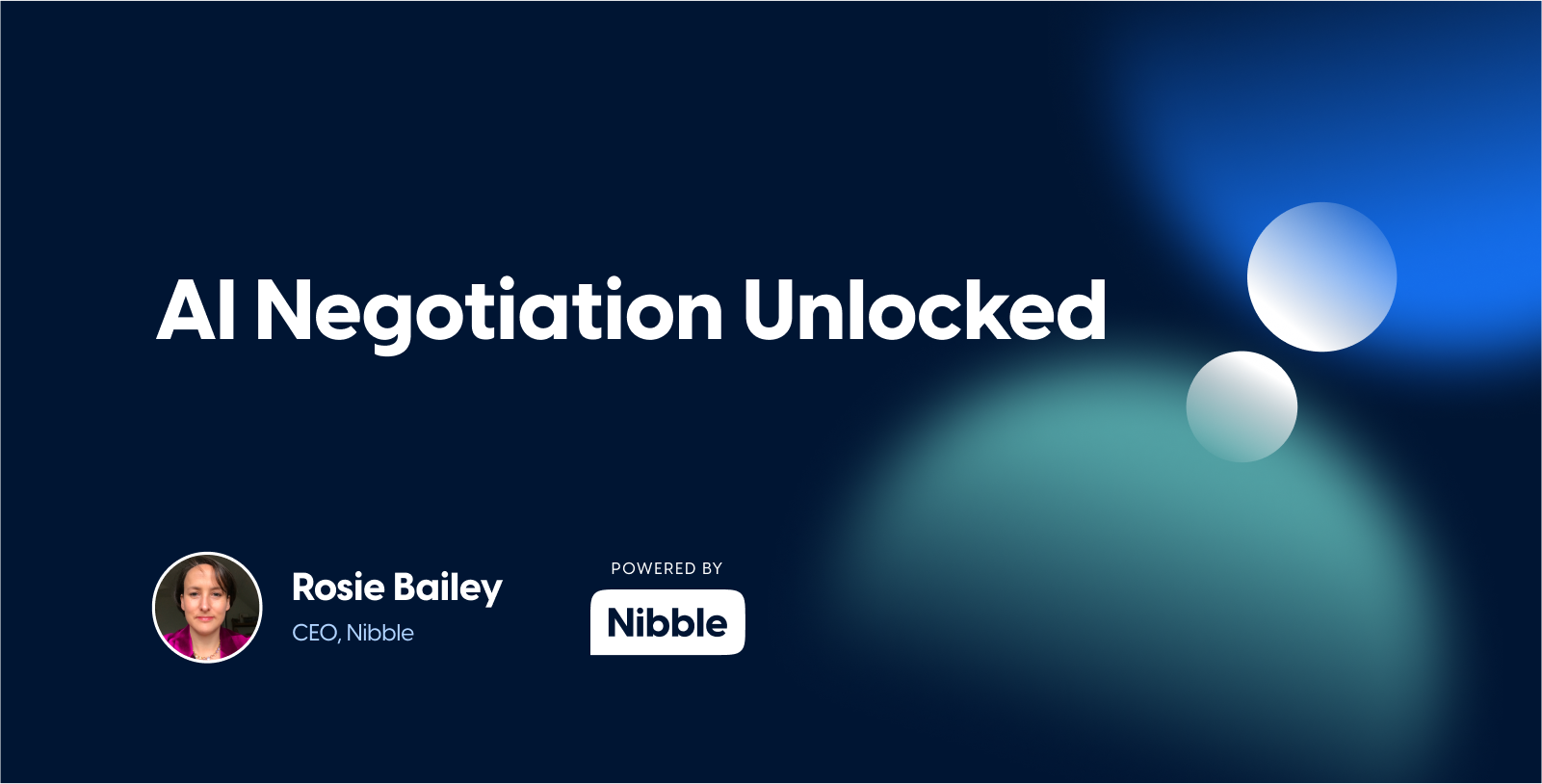
The most common question we get asked about AI negotiation is: “Give me some real examples – how would I use it?”
So here are just that: examples we’ve seen in the wild or are actively exploring with clients. What links these use cases?
- They’re scale problems — where the same negotiation task repeats again and again. A perfect job for an AI agent (see my last newsletter for more on exception and scale problems)
- They’re relationship-based — meaning there’s an existing supplier and contract in place to start from.
TL;DR
If you’re short on time, here’s the summary:
- AI negotiation works well for recurring, time-consuming procurement tasks.
- It delivers measurable savings and improves cycle times.
- It’s already being used by big names in FMCG, retail, pharma, and telecoms.
Here are a few examples:

Example 1: FMCG – Smarter Raw Material Buying
Faced with fluctuating commodity prices, manual processes just aren’t fast enough.
With an AI negotiation engine, integrated with live market indices and internal pricing models, you can negotiate:
- Unit prices (linked to market rates)
- Lead times
- Volume discounts
- Sustainability clauses
The AI handles the bulk of supplier interactions, escalating only the exceptions resulting in:
- Up to 4% reduction in average raw material costs
- 20% faster procurement cycles
- Full traceability of the conversation with better insights into what matters most for your suppliers
Example 2: Enterprise Retailer – Service Contract Renewals
Multi-site businesses have thousands of small suppliers for facilities services like HVAC (Heating, Ventilation, and Air Conditioning), janitorial, and landscaping. Many contracts are probably outdated or auto-renewing with no commercial review.
With AI negotiation, you automatically triage contracts, initiate renegotiation and handle the full signing process (pricing, service terms, compliance) and it can take under 5 minutes per supplier to negotiate price, payment terms and contract length.
A single campaign should yield:
– >$10 million in savings
– bring suppliers onto consistent payment and legal terms
– free up 100’s of hours for your procurement team.
Moreover, suppliers prefer the AI process because it is clear, fair and resolves their needs 24/7.
Is It Just for Tactical Spend?
No. Although many AI negotiation use cases are tactical (saving money or improving cash flow) but that’s not the whole story. As the technology matures, it’s being used in more strategic contexts because it is empathetic and able to support you building strong relationships. Take these two examples:
Strategic Scenario #1: Commodity Sourcing in FMCG
In categories like pet food or baby formula, core ingredients are traded commodities — prices shift, demand fluctuates and, occasionally, you need to accelerate supply. (Never more true than in today’s world of surprise tariffs and geo-political instability…)
Several CPOs I’ve spoken to say they’d love to negotiate smarter, larger, or more frequent orders — but don’t have the people or time to do it well.
Could AI handle this?
Absolutely. And the idea that suppliers would object is based on an outdated view of AI. This isn’t a clunky chatbot. Generative AI can power agents that are empathetic, conversational, and even emotionally intelligent. If this seems unbelievable look up this Harvard study showing that last year’s most common use for ChatGPT was therapy and companionship.
Strategic Scenario #2: Smarter Supplier Conversations in Telecoms
One national telecoms provider I spoke with uses detailed market insights — annual results transcripts, benchmarking data and their own trading history — to push for better supplier terms.
The logic is sound. Giving strong reasons improves your argument and increases the chance of reaching agreement – this is core academic theory about negotiations. But the delivery is still a bit robotic and rules based.
AI negotiation can turn that into a natural, two-way chat — written or spoken — with empathy, justification, and even rapport-building.
And yes, emotions do matter in negotiation. If you doubt that, look at any recent high-stakes political negotiation from President Trump or how you felt when you last asked for a payrise. Emotion is always part of negotiations.
? The Common Thread: across every use case, three benefits of AI negotiations come up again and again
- They fix high-friction, low-glamour problems – things that don’t usually get attention but leak value. Think about where this is true for you and your organisation?
- They scale fast – no need for major systems overhauls; many use cases were piloted within weeks.
- They free up humans – AI handles the repetitive stuff so people can focus on strategy, exceptions, and real relationship building.
Find out more from Nibble’s experience negotiating 100,000 times a month here.
Interested in Nibble?
